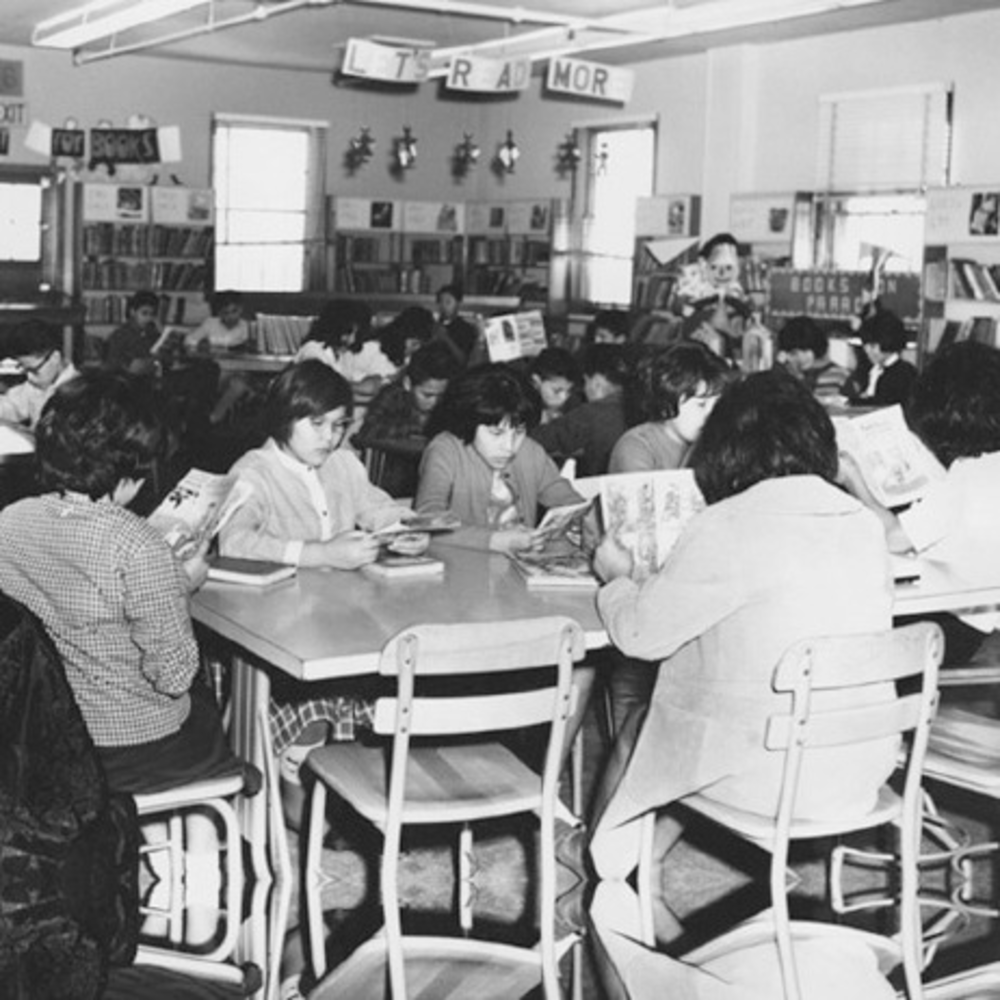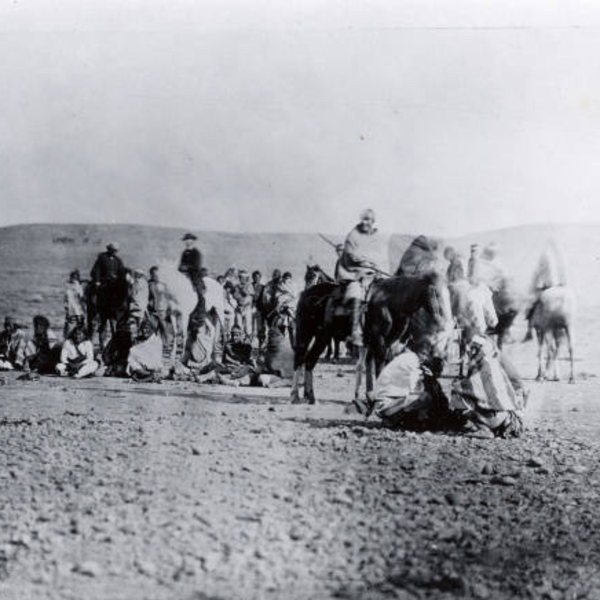Boarding Schools
As part of the 1868 Treaty of Bosque Redondo, the Diné (Navajo) agreed to send their children to Indian boarding schools. These schools were established to assimilate indigenous people by replacing their traditional lifestyles, languages, and beliefs with Euro-American and Christian values. The founder of the first of the Indian boarding schools, General Richard Henry Pratt, coined the phrase “Kill the Indian, save the man” to represent the assimilation ethos. Boarding schools had devastating impacts on American Indian culture and language. Children were separated from their families for years at a time, forced to cut their hair, and not allowed to wear their traditional clothing or speak their native languages. They were shamed for their own heritage, and physical and psychological abuse of all kinds was common. The boarding school experience left a devastating legacy with myriad impacts, including the loss of many indigenous languages.


